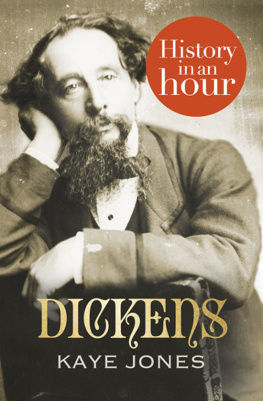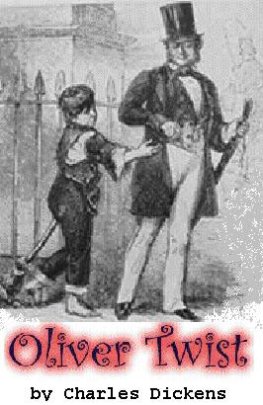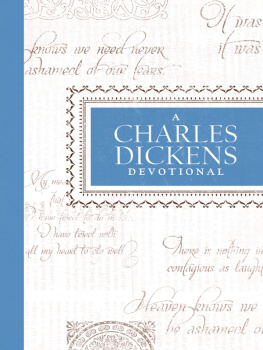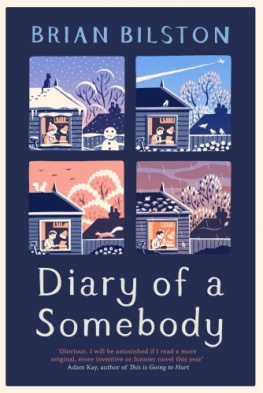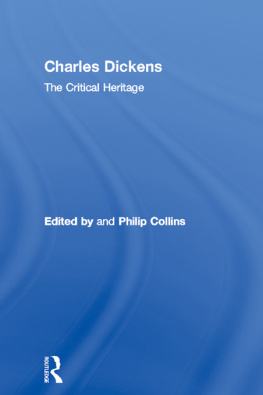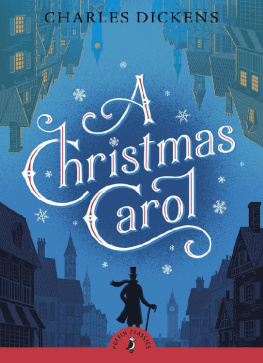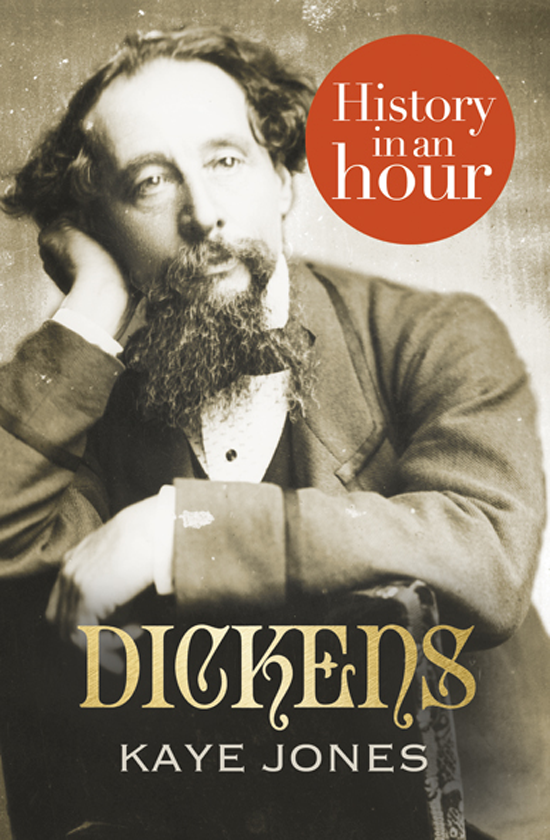
DICKENS
History in an Hour
Kaye Jones

History in an Hour is a series of ebooks tohelp the reader learn the basic facts of a given subject area.Everything you need to know is presented in a straightforward narrativeand in chronological order. No embedded links to divert your attention,nor a daunting book of 600 pages with a 35-page introduction. Juststraight in, to the point, sixty minutes, done. Then, having absorbedthe basics, you may feel inspired to explore further.
Give yourself sixty minutes and see what you can learn...
To find out more visit http://historyinanhour.com or follow us on twitter: http://twitter.com/historyinanhour
Contents
One of the most celebrated British authors ofall time, Charles John Huffam Dickens was born on 7 February 1812 inPortsmouth England. Though Dickens received little formal education, heproduced some of the most famous works of the Victorian era, such as Oliver Twist and A Christmas Carol ,novels that continue to be enjoyed today. Dickens didnot limit himself to being a novelist, he was also a journalist, socialcommentator, philanthropist, husband, lover and father.
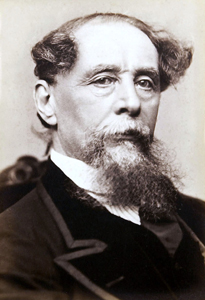
Charles Dickens c. 1867, photograph by Jeremiah Gurney
As a celebration of the bicentenary of hisbirth in 2012, this ebook will guide readers through the formativeevents, relationships and experiences that inspired and underpinned hiswork.
Charles Dickens was born in Portsmouth on 7February 1812. He was the second child of Elizabeth Dickens (neBarrow) and John Dickens, a clerk in the naval pay office attached tothe nearby dockyard. Due to the nature of Johns work, the family movedfrequently during Dickens earliest years, with stays in and aroundLondon, and to Sheerness, before a more permanent posting to theChatham Dockyard in Kent in 1817. Here, the family lived at 2 OrdnanceTerrace, a six-roomed house with two live-in servants.
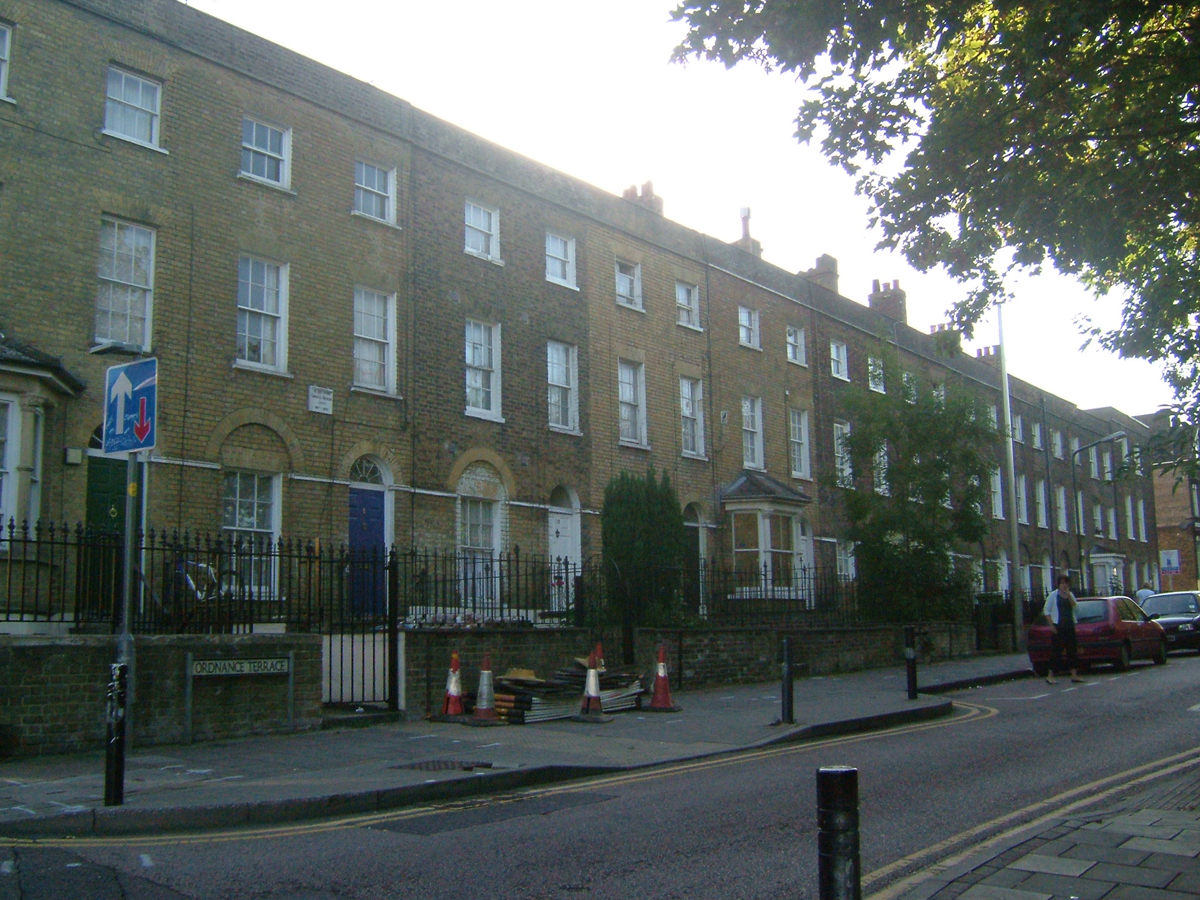
Ordnance Terrace, Chatham, photograph by Clem Rutter
It was Elizabeth Dickens who tookresponsibility for the education of Dickens and his elder sister,Fanny, in these early years. Alongside her lessons in English andLatin, Dickens became an avid reader. He spent many hours in the atticenjoying the books from his fathers collection, such as Don Quixote , The Arabian Nights and Robinson Crusoe. Dickens also received some schooling at a nearby dame school. Prior tothe introduction of compulsory education for children in 1870, theseschools provided a much-needed service for families who were too poorto pay for private schooling. Dame schools, often run by an unqualifiedwoman from her own home, helped many children master the basics ofreading, writing and arithmetic.
In 1821 Dickens left the humble dame school andenrolled at the Reverend William Giles School, a private, fee-payingestablishment. It was around the same time that John Dickens financialproblems, of which the origin is unknown, caused the family to relocateto a smaller house in Chatham. Money troubles, however, did not standin the way of a happy childhood. At school, Dickens made greatprogress, while at home he wiled away his time with make-believe games,performing recitals and plays with his sister, Fanny. On severaloccasions the pair saw plays by Shakespeare at the Rochester Playhouse,inciting in the young boy a love of the theatre that would endurethroughout his life. With its majestic cathedral, ruined castle andbustling river, the city of Rochester also captured his imagination.
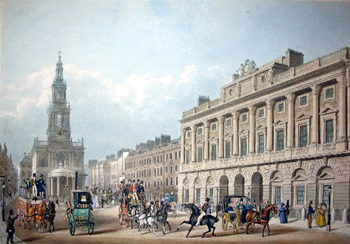
Somerset House, c. 1836
The next year, however, John Dickens took up anew position at Somerset House in Central London.Dickens remained in Chatham to finish the term at Giles School andthen joined the family at 16 Bayham Street. Situated in the lessgenteel suburb of Camden Town, Dickens described it as having abasement, two ground floor rooms, two on the first floor, a garret andan outside wash-house. When describing the Cratchit family home in A Christmas Carol ,it was to Bayham Street that Dickens looked for inspiration. Home tohis parents, four siblings, his relative through marriage, JamesLamert, and an orphan brought from the Chatham Workhouse, the housemust have felt extremely cramped and considerably less comfortable thanany previous family home. Reflecting on this time in his life, he toldhis friend and biographer, John Forster, of his distress at losing hislife in Chatham and his overwhelming desire to be taught something,anywhere. To make matters worse, Fanny was about to enrol on afour-year course at the Royal Academy of Music at considerableexpense to the family.
By the time the Dickens family arrived inLondon in 1822, it was the largest city in the world and the heart ofthe British Empire. Beginning in the late eighteenth century,industrialization had been transformed the social and economiccharacter of the city. From shipbuilding to domestic service, Londonthrived as a centre of production and employment. Workers from as farafield as India and China flocked to the city in search of newopportunities, causing a dramatic and continual increase in the cityspopulation.
Not all of Londons inhabitants, however, shared in itswealth and prosperity. High levels of poverty, caused by unemploymentand low wages, created scores of slum neighbourhoods that came torepresent the darker side of this great city. For the young Dickens,these poor areas and their inhabitants replaced Chatham as thefocus of his attention. He looked upon slums like the Seven Dials,situated close to his Camden home, with equal amounts of fascinationand repulsion and would find inspiration from their squalor and vicethroughout his literary career.
On 26 December 1823, the family left Bayham Street andmoved to 4 Gower Street North, a small house in the suburb ofBloomsbury. With his fathers debts increasing, his mother, Elizabeth, attempted to alleviate the financial burden bysetting up a school for young ladies (pictured below). Known as MrsDickens Establishment, the venture was a complete failure, despiteDickens attempts to drum up business in the local area. As he wouldlater recall, nobody ever came to the school, nor do I recollect thatanybody ever proposed to come, or that the least preparation was madeto receive anybody.
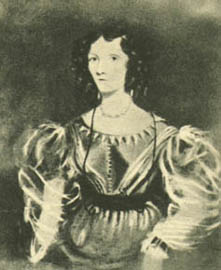
Elizabeth Dickens
The next attempt to ease the familys financialburden came in the form of a job offer from James Lamert, the familysformer lodger. Employed as the manager of a local boot-blackingfactory, he suggested that Dickens get a job at the factory and do hisbit to support the family. While Dickens staunchly protested, hisparents gratefully accepted the offer.
On 9 February 1824, only two days after his twelfthbirthday, Dickens left his home in Gower Street North and walked thethree miles to Warrens Blacking Factory at 30 Hungerford Stairs, theStrand. His job was to label the individual pots of blacking, a mixtureused for polishing boots. In return, he received six shillings perweek, approximately 12.58 in modern currency. In this dirty anddecayed environment, as he would later describe it, Dickens quicklybecame known as the young gentlemen among his fellow workers. Whilesome may have treated him as an outcast, a young boy called Bob Fagintook Dickens under his wing. He would later become the namesake for onehis most famous villains, Fagin, in Oliver Twist .
Next page
